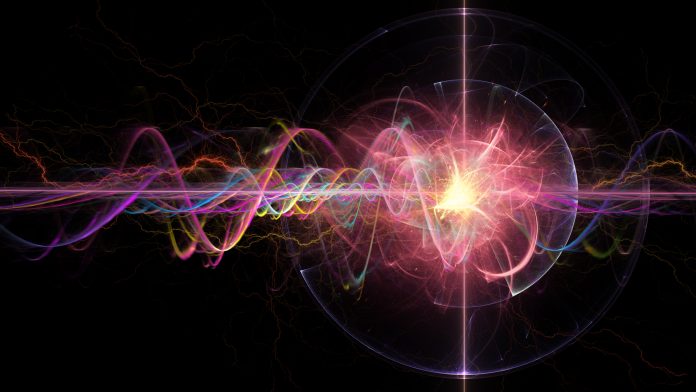
Researchers have detected magnetic fields with extreme sensitivity by combining machine learning with quantum sensors – Meaning a new wave of MRI scanners may be on the horizon.
Published in Physical Review X, this research could lead to a new generation of MRI scanners which uses magnetic fields and radio waves to produce detailed images of the inside of the body, as well as further potential uses within biology and material science. These findings were achieved using a combination of machine learning techniques – where computers adapt and learn from experience as humans and animals naturally do – and quantum sensors.
The world of quantum sensors
Researchers from the Quantum Engineering and Technology Labs (QETLabs) at the University of Bristol, in collaboration with the Institute for quantum optics of the University of Ulm and Microsoft, have demonstrated this using a quantum sensor based on the electron-spin in a Nitrogen-vacancy (NV) centre in a diamond.
Nitrogen-vacancy (NV) centres are atomic defects that can be found or created in a diamond. They allow one to interact with single electrons, which can in turn be used for sensing both electric and magnetic fields.
Their unique combination of high spatial resolution and sensitivity has led to the investigation of scenarios where the activity of single neurons is monitored and mapped down to the nanoscale. However, such nanoscale nuclear magnetic resonance applications are limited by the noise of the optical readout available at room temperature in state-of-the-art setups.
Unlocking the potential development of new MRI scanners
Dr Anthony Laing, University of Bristol lead researcher, said: “We expect that the deployment of our techniques can unlock unexplored regimes in a new generation of sensing experiments, where real-time tracking and enhanced sensitivities are crucial ingredients to explore phenomena at the nanoscale.”
Dr Raffaele Santagati, Research Associate at the University of Bristol’s Centre for Quantum Photonics, added: “Here we show how machine learning can help overcome these limitations to precisely track a fluctuating magnetic field at room temperature with a sensitivity typically reserved for cryogenic sensors.”
Co-author Antonio Gentile said: “In our paper, we show how a Bayesian inference approach can successfully learn the magnetic field and other physical important quantities from naturally noisy data. This allows us to relax the complexity of the data readout process at the cost of advanced data processing.”
Nitrogen-vacancy centres, found in diamond imperfections, have already been used in demonstrations of their sensing capabilities, but noise and unwanted interactions can limit their applicability to real-world scenarios. The results presented in this work shows how to overcome these limitations.
























